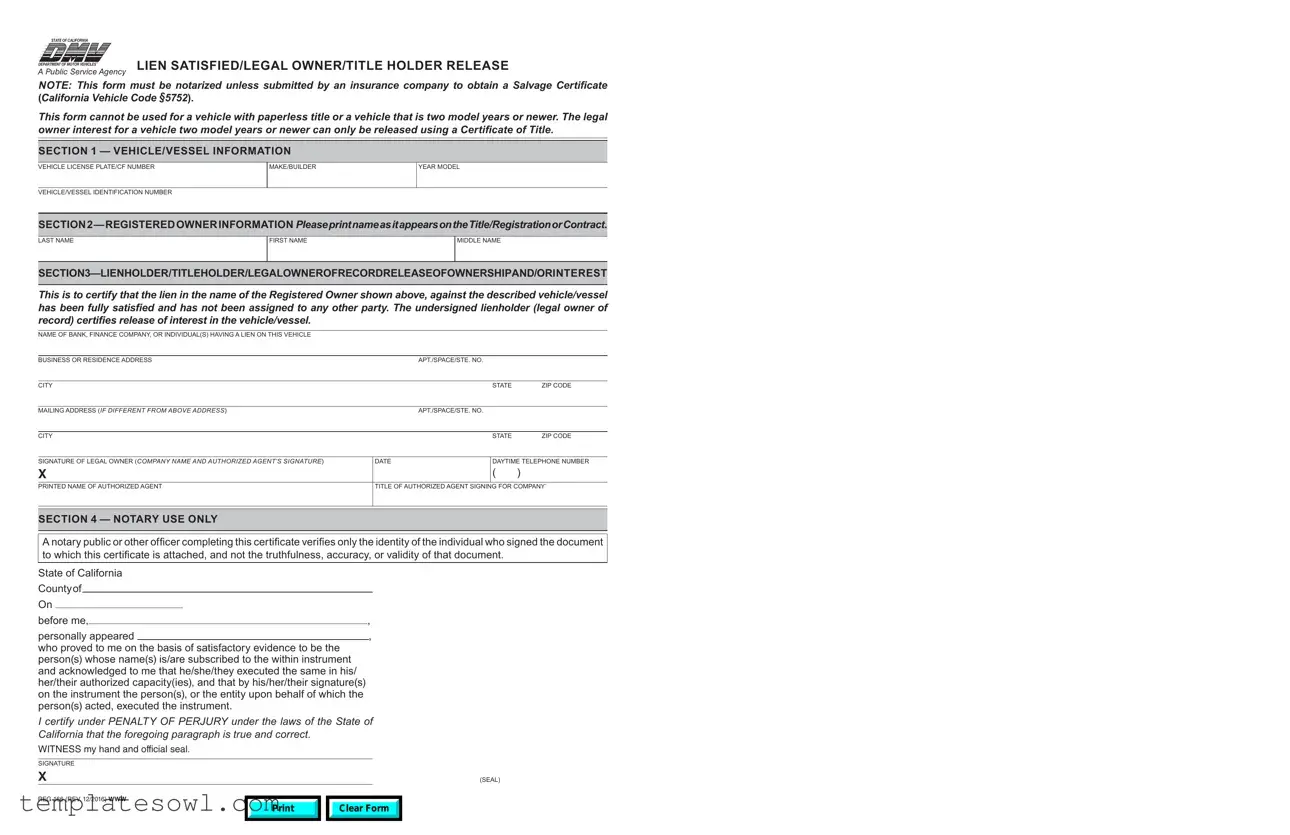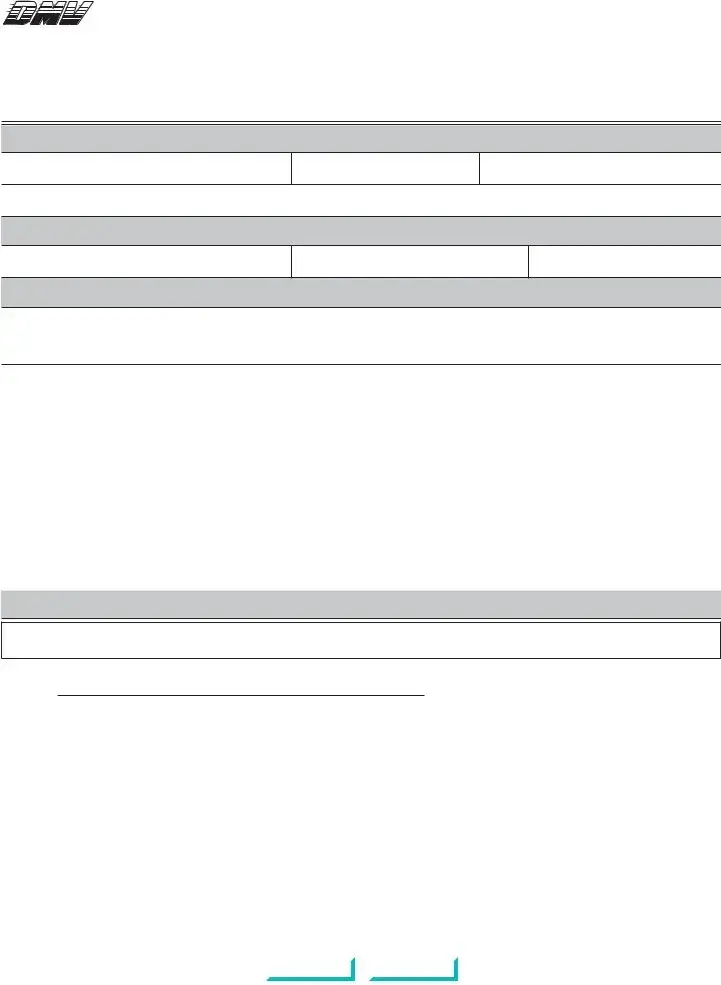What is the Reg 166 form?
The Reg 166 form is used in California to release a lien on a vehicle or vessel. It confirms that the lien on the vehicle has been fully satisfied by the legal owner. This form is essential for transferring ownership or obtaining a salvage certificate.
Who needs to fill out the Reg 166 form?
Typically, the form is filled out by the lienholder or legal owner of a vehicle. If you have paid off your vehicle loan or lien, the financial institution or individual who held the lien must complete this form to clear the ownership record.
Do I need a notary for the Reg 166 form?
Yes, the Reg 166 form must be notarized unless it is being submitted by an insurance company for a salvage certificate. This is necessary to verify the identity of the person who signed the document.
Can I use the Reg 166 form for a vehicle that is two model years old or newer?
No, the Reg 166 form cannot be used for vehicles that are two model years old or newer. For those vehicles, a Certificate of Title must be used to release ownership or legal interest.
What information do I need to provide on the Reg 166 form?
You need to provide details about the vehicle or vessel, such as the license plate number, make, model, year, and VIN. You also need to include information about the registered owner and the lienholder or legal owner of record.
What happens if the lien is not satisfied?
If the lien has not been satisfied, the lienholder cannot sign and complete the Reg 166 form. It is important to ensure that all financial obligations have been paid off before proceeding with this form.
Where do I submit the completed Reg 166 form?
The completed Reg 166 form should be submitted to the California Department of Motor Vehicles (DMV) along with any other required documents to clear the vehicle's title.
Is there a fee associated with filing the Reg 166 form?
There is typically no fee specifically for filing the Reg 166 form alone, but there may be fees associated with other DMV services related to title transfer or registration. It's best to check the DMV’s website for any applicable charges.
What is the purpose of notarization for the Reg 166 form?
Notarization serves to verify the identity of the signer and ensures that they are authorized to release the lien. It adds an extra layer of security and validity to the document.
What should I do if I have more questions about the Reg 166 form?
If you have additional questions, you can contact the California DMV directly or visit their website. They provide resources and assistance for any inquiries regarding vehicle title and ownership issues.

